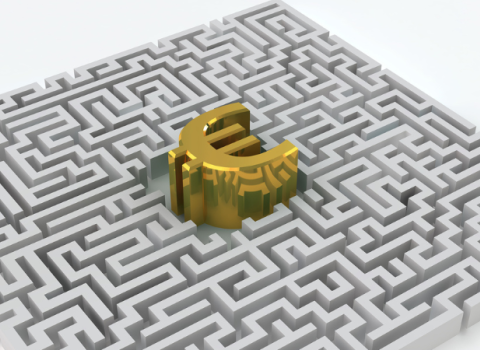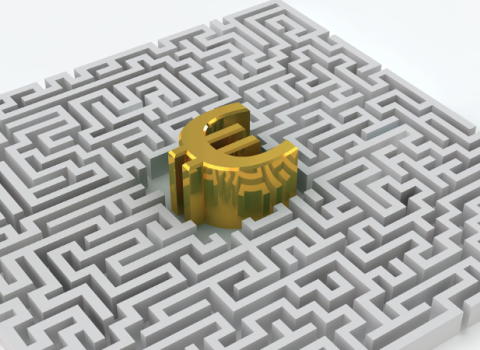
European Commissioner for Research, Innovation and Science, Maire Geoghegan-Quinn
The European Commissioner for Research, Innovation and Science, Maire Geoghegan-Quinn, has appointed a group of academics and business people to devise a new innovation indicator, as she takes one more step in shaping-up EU research and innovation, an area of policy which EU ministers yesterday (May 26) acknowledged has moved up the pecking order of priorities.
The high-level group, to be chaired by Andreu Mas-Colell, secretary-general of the European Research Council, consists of “experts in innovation and indicators,” the Commissioner told Science|Business in an interview. The task is to look at criteria that could be included in an innovation indicator and decide which would best measure how research investment is spent.
As the EU sticks with a controversial target of investing 3 per cent of GDP in research and development, Geoghegan-Quinn said she is keen to respond to the concerns of some member states about how the output from this 3 per cent is measured. The current Innovation Scoreboard fails to capture everything the member states are doing, and a broader indicator is needed that takes into account different elements.
“I would see this replacing the scoreboard to become something that is of much greater value to the member states, much more useable, and in fact can actually measure what’s happening on innovation, where the scientific research is being invested and what kind of results and outputs we get at the end of the day,” Geoghegan-Quinn said.
The Commissioner acknowledged coming up with such an indicator is “not an easy thing to do” and may not be completed in time for the publication of the innovation strategy in the autumn. Geoghegan-Quinn wants to finalise the details of the strategy by September, in time to be presented to EU leaders at their October meeting in Brussels.
EU research ministers, meeting on May 26 in Brussels for the Competitiveness Council, welcomed the Commission’s intention to present this new plan for European research and innovation. The ministers acknowledged research and innovation policy has moved up in terms of EU policy priorities and become “widely recognised as a key enabler of competitiveness, productivity growth and sustainability” and emphasised that the new strategy, “Should include all forms of innovation in both the public and the private sector, and create a sound basis for synergies between policy areas.”
The need to make an explicit link between EU research spending and innovation was highlighted by the UK’s new Science Minister, David Willetts, who said driving research and innovation in the EU is central to putting national economies back on the road to a “sustainable and competitive” future.
He added, “As the third biggest area of expenditure in the EU budget it’s also important that we make every penny count. We will be working hard to ensure that costs are controlled and that the research budget delivers the practical solutions needed to drive our economic recovery.”
The research ministers called for action in five areas: financial, markets, governance, regional priorities and people. (For the details of the conclusions on creating an innovative Europe, see http://www.consilium.europa.eu/uedocs/cms_Data/docs/pressdata/en/intm/114637.pdf).
Simplified and more efficient programmes supporting European research and innovation was another item on the ministers’ agenda. They recognised the “urgent need for an in-depth rethinking” of how programmes are implemented and called for “a serious effort” to reduce the complexity of current EU programmes. The Council welcomed Geoghegan-Quinn’s recent communication on simplification as a step in the right direction. (For the details of the conclusions on simplification, see http://www.consilium.europa.eu/uedocs/cms_Data/docs/pressdata/en/intm/114640.pdf).
The members of the Innovation Indicator group
Prof. Andreu Mas-Colell, Secretary General of the European Research
Council and Professor at the Department of Economics and Business at
Universitat Pompeu Fabra
Business Innovators
Dr Erkki Ormala - Vice President, Technology Policy, Corporate Relations
and Responsibility, Nokia Corporation
Dr Henning Kagermann - President Acatech Berlin, Wipro Board of
Directors, former CE0 (2009) SAP
Mr Diogo Vasconcelos - Distinguished fellow at Cisco systems
Dr Martin Curley -Director of Intel Labs Europe, Senior Principal
Engineer and Global Director of IT Innovation at Intel Corporation
Dr Branko HUČ - Co-founder and Managing Director at a Slovenian start-up
company Lenis d.o.o.
Marek Serafin - Member of the Management Board, Petrochemical
Operations, PKN ORLEN S.A.
Dr Helmar Rendez - former executive director research/innovation of
Vattenfall Europe AG
Economists
Dr Bronwyn Hall - Professor at UC Berkeley, USA and Department of
Economics of Technology and Innovation at Maastricht University
Dr Franco Malerba - Professor at Bocconi University and Director of
KITeS, Bocconi University
Dr Hugo Hollanders - Senior Research Fellow at UNU-MERIT
Dr Dominique Foray - Director of the Chaire en Economie et Management de
l'Innovation at EPFL
Dr Ammon Salter - Research Director of the UK Innovation Research Centre
The Council action makes the group more official, and names the Commission as chair. It is to be renamed the European Research Area Committee (ERAC) with its main mission being to provide timely strategic input to the Council, the Commission and the member states on any research and innovation issue relevant to the development of the ERA. (For the details of the conclusions on ERA governance, see http://www.consilium.europa.eu/uedocs/cms_Data/docs/pressdata/en/intm/114635.pdf)
Geoghegan-Quinn told Science|Business that she wants to see this committee take on a higher profile. “I want to see people coming to CREST that are at a very high level. I would like to see that encouraged,” she said.
On the subject of the ERA, the ministers also welcomed the fact that the high-level group on joint programming earlier this month identified new themes for joint programming as:
Connecting Climate Knowledge for Europe (Clik'EU);
Healthy and Productive Seas and Oceans;
More Years, Better Lives - The Potential and Challenges of Demographic Change;
The microbial challenge - An emerging threat to human health;
Urban Europe - Global Challenges, Local Solutions;
Water Challenges for a Changing World;
(For the details of the conclusions on developing the ERA, see http://www.consilium.europa.eu/uedocs/cms_Data/docs/pressdata/en/intm/114644.pdf)
Geoghegan-Quinn said that these could also be areas explored as the planned European innovation partnerships. She is keen to emphasise that these partnerships would not create another layer on top of what already exists. “What we’re talking about is providing a vehicle that those instruments that are there already can feed into, but most importantly that European innovation partnerships focus on the grand challenges,” she said.
To help her come up with these and other ideas that feed into her planned innovation strategy, the Commissioner is consulting with her colleagues whose portfolios cross over into research policy. The ideas flying around are creating “an incredible buzz within the different directorates-general,” she said, adding that “presentations will start being made on specific aspects of the strategy to me and to the cabinet in the next month.”
In her search for new ideas, the commissioner is also looking to the US, with a six-day trip to Washington starting today (May 27). Her schedule includes meetings with the Advisor to President Obama for Science and Technology John Holdren, Secretary of Commerce Gary Locke and Secretary of Energy Steven Chu.
“I want to learn because they are the big innovators. They have managed to create a culture of venture capital, availability of support for companies, incubators that bring companies to the next level and on to being global players,” Geoghegan-Quinn said. “They have a wealth of experience in this area that we certainly don’t have, so I want to pick their brains and get ideas about what we need to do.”





 A unique international forum for public research organisations and companies to connect their external engagement with strategic interests around their R&D system.
A unique international forum for public research organisations and companies to connect their external engagement with strategic interests around their R&D system.